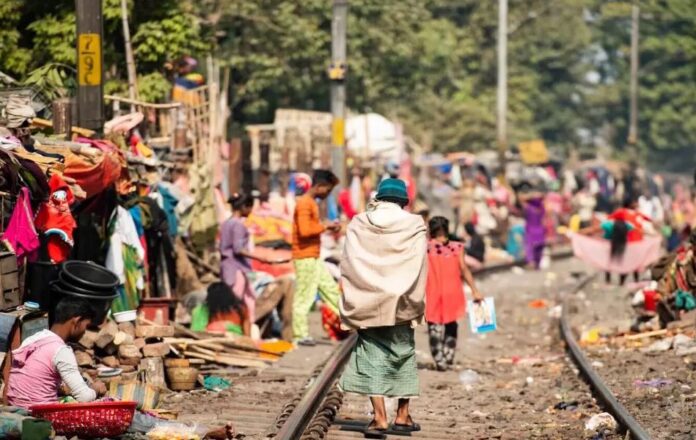A staggering 1.1 billion people are currently living in acute poverty worldwide, according to a report released Thursday by the United Nations Development Program (UNDP) in collaboration with the Oxford Poverty and Human Development Initiative (OPHI). Children represent over half of those affected, with an estimated 584 million under 18 living in extreme conditions.
The 2024 Multidimensional Poverty Index (MPI) report draws from data across 112 countries, covering a population of 6.3 billion. The index considers factors such as inadequate housing, sanitation, electricity, cooking fuel, nutrition, and school attendance. Poverty rates are shown to be three times higher in countries experiencing conflict, as 2023 marked a record year for global conflicts since World War II.
Also Read: India’s Car Sales to Dealers Decline After Nine-Quarter Growth as SUV Demand Slows
Yanchun Zhang, UNDP’s chief statistician, emphasized the severe challenges faced by the poor in conflict zones, where basic survival becomes increasingly dire. “The 2024 MPI paints a sobering picture: 1.1 billion people endure multidimensional poverty, of which 455 million live in the shadow of conflict,” Zhang stated.
The report highlights that Sub-Saharan Africa and South Asia house 83.2 percent of the world’s poorest populations. India, Pakistan, Ethiopia, Nigeria, and the Democratic Republic of the Congo account for nearly half of those living in extreme poverty, with India alone having 234 million impoverished individuals.
Sabina Alkire, director of the OPHI, pointed to the significant impact of conflicts on poverty reduction efforts, underscoring the urgent need for international focus on both poverty alleviation and fostering peace to ensure lasting progress.
Here are some important facts about world poverty:
- Global Poverty Rate: As of 2023, around 9.2% of the world’s population lives on less than $1.90 a day, the international poverty line defined by the World Bank.
Poverty in India: Around 234 million people in India live in extreme poverty, accounting for a significant portion of the global poor. Nearly 27.9% of Indian children under 18 are estimated to be living in multidimensional poverty.
- Children in Poverty: An estimated 584 million children under the age of 18 live in extreme poverty, accounting for over half of the global poor.
- Multidimensional Poverty: Over 1.1 billion people experience multidimensional poverty, which encompasses not just income but various deprivations in education, health, and living standards.
- Impact of Conflict: Poverty rates are significantly higher in countries experiencing conflict, with more than 450 million people living in poverty in these regions.
- Regional Disparities: The majority of the world’s poorest people live in Sub-Saharan Africa and South Asia, with these regions representing 83.2% of the global poor.
- Extreme Poverty in India: India has the largest number of people living in extreme poverty, affecting approximately 234 million individuals.
- Gender Disparities: Women and girls are disproportionately affected by poverty. They often face additional barriers such as discrimination and lack of access to education and healthcare.
- Health Implications: Poverty is closely linked to health outcomes, with poorer populations having limited access to healthcare and higher rates of malnutrition, disease, and mortality.
- Education Access: Lack of education is both a cause and a consequence of poverty. Children from poor families often miss out on schooling, perpetuating the cycle of poverty.
- COVID-19 Impact: The COVID-19 pandemic has exacerbated global poverty, pushing an estimated 97 million additional people into extreme poverty in 2020 alone, reversing years of progress.
- Economic Inequality: Economic inequality is a significant factor contributing to poverty, with wealth concentrated in the hands of a small percentage of the population, hindering equitable development.
- Poverty Reduction Goals: The United Nations’ Sustainable Development Goal 1 aims to end poverty in all its forms everywhere by 2030, emphasizing the need for sustainable economic growth and social protection systems.



